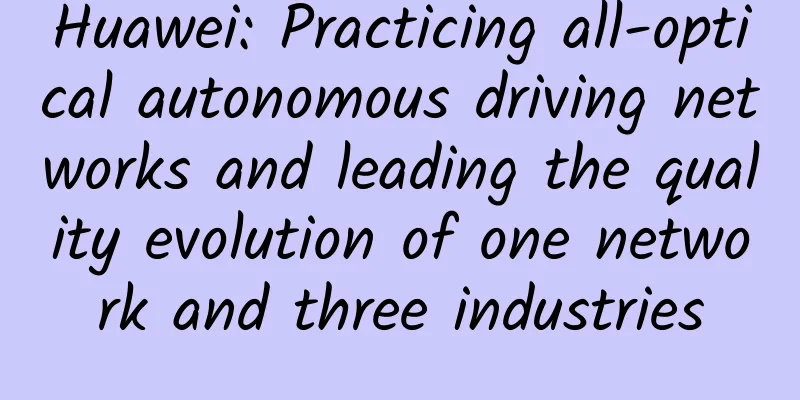WiFi is disliked by the EU and 5G may be selected as the communication standard for Internet of Vehicles

|
EU member states recently voted on a plan to adopt Wi-Fi as the future vehicle networking communication standard. 21 EU countries voted against it - this is the vast majority of the 28 EU member states.
The plan for this vote proposed that short-range Wi-Fi be used as the communication standard for future vehicle networking technology, and that 5G cellular network connections be prohibited. This plan was rejected by most member states, which actually paved the way for 5G to become the EU's future vehicle networking communication standard. For years, the automotive industry has been divided over whether to use Wi-Fi or 5G for car networking technology. General Motors, NXP, Toyota, Volkswagen and Volvo support Wi-Fi, while BMW, Daimler, Ford, Huawei, Intel, Qualcomm and Samsung support 5G. Whether using Wi-Fi or 5G, the basic concept of V2X (vehicle-to-everything) remains the same: cars exchange information with the outside world, such as other cars and local infrastructure (roads, traffic lights, and control systems), to achieve safe coordination and have full autonomy. For quite a long time, the Wi-Fi camp has certain advantages due to its low latency and mature technology. In contrast, cellular network technology lags far behind. However, this situation will be broken after the popularization of 5G. 5G is not only comparable to Wi-Fi in latency, but also provides more technical advantages. Generally speaking, the Wi-Fi standard used in vehicles is 802.11p, which uses a low-bandwidth 5.9GHz radio channel to transmit data at a speed of 3-27Mbps within a distance of 150 meters to 1 kilometer, and the maximum speed of the transmitting vehicle can reach 260 kilometers per hour. Due to many practical factors, the actual transmission distance and data bandwidth of Wi-Fi may be at the lower end of these ranges. One of the main reasons why the EU proposed using Wi-Fi as the communication technology for the Internet of Vehicles is that the Wi-Fi camp believes that it has already been deployed in 2016, while 5G is not. Although the Wi-Fi standard has been proposed for many years, its development has not been smooth. Except for some deployments in Japan, there is no commercial system in the world so far. But 5G is different. Currently, many countries around the world have launched 5G networks, and 5G popularization is just around the corner. Compared with Wi-Fi, 5G can not only provide larger upload bandwidth and lower downlink latency, but in theory, 5G C-V2X will support lossless data transmission between vehicles at a maximum speed of 500 kilometers per hour, even at a distance of more than 450 meters, and will also benefit from numerous 5G base stations. The report said that given the dominant position and performance of 5G, European companies have recently begun to worry about investing in "soon-to-be-obsolete" Wi-Fi technology. |
<<: Why does TCP use the "three-way handshake" to establish a connection? An example will teach you
>>: Top 9 bandwidth monitoring tools for enterprise networks
Recommend
What are the popular LAN technologies and LAN types today?
LAN technology in computer networking is widely u...
Harbin Railway has installed wireless WIFI network on more than 1,000 trains
Wireless WiFi networks have been installed on 19 ...
Woman connected to WiFi and received a huge bill: Some WiFi is actually charged
Nowadays, surfing the Internet with mobile termin...
In-depth study of principles - TCP long connection and heartbeat keep alive
Preface Many Java programmers may only have a thr...
Demand is holding back technology. WiFi6 is not yet popular. 6E is coming.
As 5G technology develops rapidly, Wi-Fi technolo...
5G commercialization has arrived, how far are 6G and the "terahertz era"?
On October 31, 2019, the three major operators an...
CloudCone Black Friday pre-sale released, Los Angeles MC data center KVM annual payment starts from $14.2
Black Friday is still a long way off, but some bu...
Foreign media: Germany may completely shut down 3G network in 2022
Deutsche Telekom has become the third major opera...
Kvmla: Singapore 500GB hard drive VPS monthly payment from 145 yuan, CN2+BGP network
Kvmla currently launched a VPS host with a large ...
Sharktech: Los Angeles high-defense 1Gbps unlimited traffic server starting at $79/month, 10Gbps unlimited traffic starting at $379/month
Sharktech is a long-established hosting company f...
Alibaba Cloud domain name binding IP and second-level domain name use step-by-step tutorial
[[432988]] This article is reprinted from the WeC...
CloudCone: $14/year KVM-512MB/10GB/3TB/Los Angeles data center
CloudCone has launched a flash sale for 2021, off...
RackNerd adds a new user self-service IP change function, starting from $10.18/year in multiple data centers in San Jose/Los Angeles/Seattle
RackNerd has officially added a self-service IPv4...









